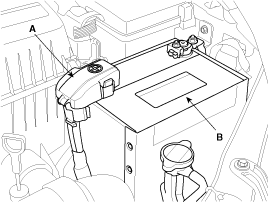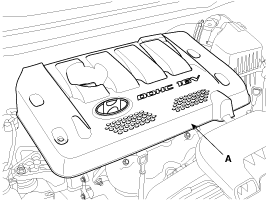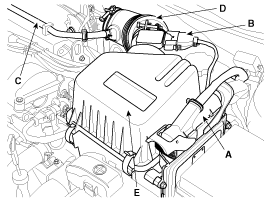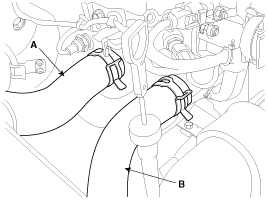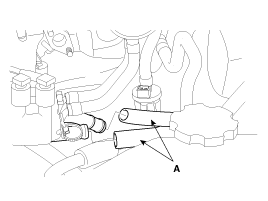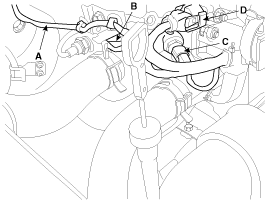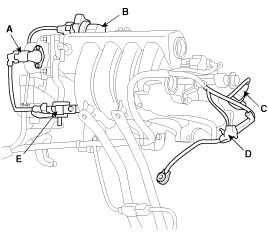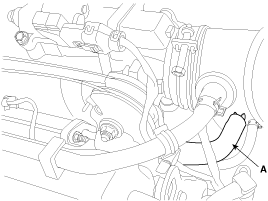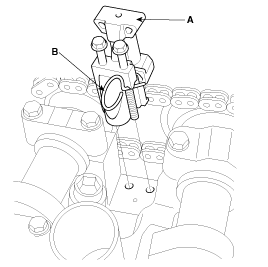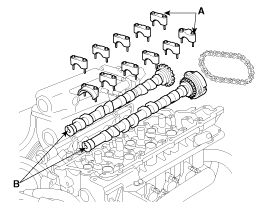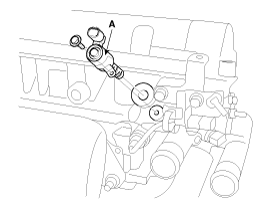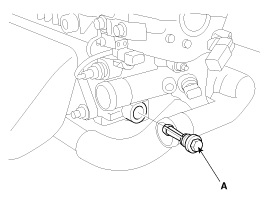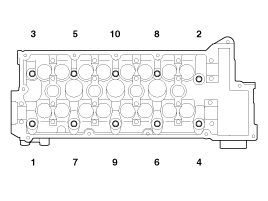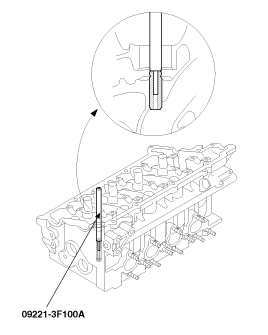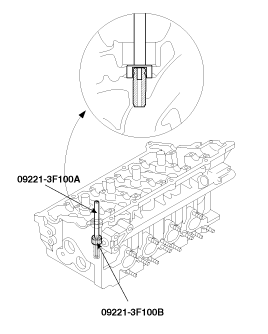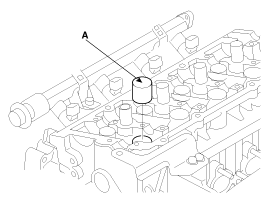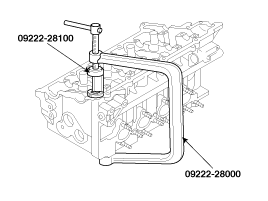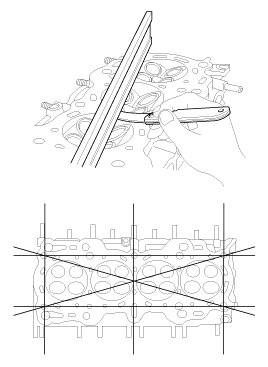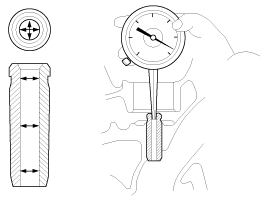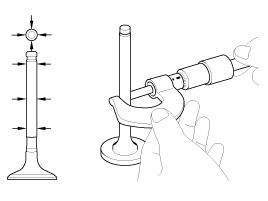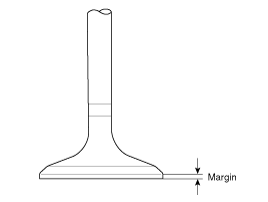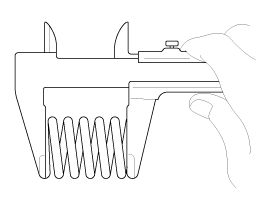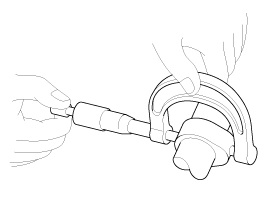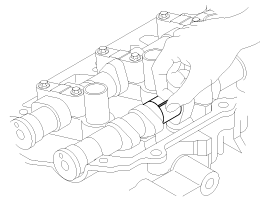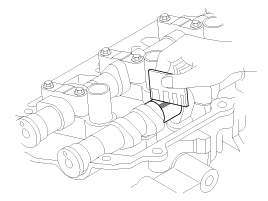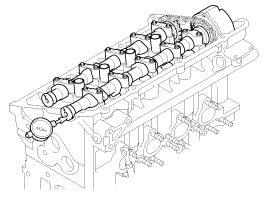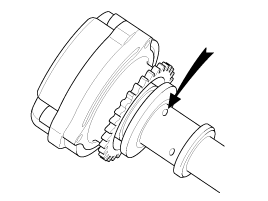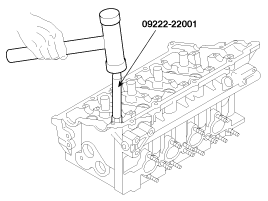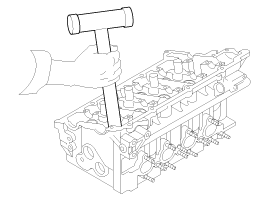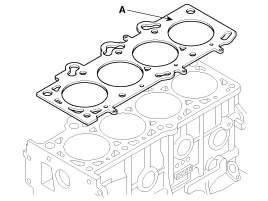 Hyundai Elantra: Repair procedures
Hyundai Elantra: Repair procedures
Removal
|
|
| 1. |
Disconnect the negative terminal (A) from the battery and remove
the battery (B).
|
| 2. |
Remove the engine cover (A).
|
| 3. |
Drain the engine coolant.
Remove the radiator cap to speed draining.
|
| 4. |
Remove the intake air hose and air cleaner assembly.
|
| 5. |
Remove the upper radiator hose(A) and lower radiator hose(B).
|
| 6. |
Remove the heater hoses (A).
|
| 7. |
Remove the engine wire harness connectors and wire harness clamps
from the cylinder head and the intake manifold.
|
| 8. |
Remove the fuel inlet hose (A) from delivery pipe.
|
| 9. |
Remove the PCSV hose.
|
| 10. |
Remove the brake booster vacuum hose.
|
| 11. |
Remove the accelerator cable and the auto-cruise cable by loosening
the locknut, then slip the cable end out of the throttle linkage.
|
| 12. |
Remove the spark plug cable.
|
| 13. |
Remove the PCV hose.
|
| 14. |
Remove the cylinder head cover.
|
| 15. |
Remove the timing belt.
|
| 16. |
Remove the exhaust manifold.
|
| 17. |
Remove the intake manifold.
|
| 18. |
Remove the camshaft sprocket.
|
| 19. |
Remove the timing chain auto tensioner (A).
|
| 20. |
Remove the camshaft bearing caps (A) and camshafts (B).
|
| 21. |
Remove the OCV(oil control valve) (A).
|
| 22. |
Remove the OCV(oil control valve) filter (A).
|
| 23. |
Remove the cylinder head bolts, then remove the cylinder head.
|
Replacement
Valve Guide
| 1. |
Using the SST(09221-3F100A), withdraw the old valve guide toward
the bottom of cylinder head.
|
| 2. |
Recondition the valve guide hole so that it can match the newly
press-fitted oversize valve guide.
|
| 3. |
Using the SST(09221-3F100A/B), press-fit the valve guide. The
valve guide must be press-fitted from the upper side of the cylinder
head. Keep in mind that the intake and exhaust valve guides are different
in length.
|
| 4. |
After the valve guide is press-fitted, insert a new valve and
check for proper stem -to-guide clearance.
|
| 5. |
After the valve guide is replaced, check that the valve is seated
properly. Recondition the valve seats as necessary.
|
Disassembly
Identify MLA(Mechanical Lash Adjuster), valves, valve springs
as they are removed so that each item can be reinstalled in its original
position.
|
| 1. |
Remove MLAs (A).
|
| 2. |
Remove valves.
|
Inspection
Cylinder Head
| 1. |
Inspect for flatness.
Using a precision straight edge and feeler gauge, measure the
surface the contacting the cylinder block and the manifolds for warpage.
|
| 2. |
Inspect for cracks.
Check the combustion chamber, intake ports, exhaust ports and
cylinder block surface for cracks. If cracked, replace the cylinder
head.
|
Valve And Valve Spring
| 1. |
Inspect valve stems and valve guides.
|
| 2. |
Inspect valves.
|
| 3. |
Inspect valve seats
Check the valve seat for evidence of overheating and improper
contact with the valve face.
Replace the seat if necessary.
Before reconditioning the seat, check the valve guide for wear.
If the valve guide is worn, replace it, then recondition the seat. Recondition
the valve seat with a valve seat grinder or cutter. The valve seat contact
width should be within specifications and centered on the valve face.
|
| 4. |
Inspect valve springs.
|
Camshaft
| 1. |
Inspect cam lobes.
Using a micrometer, measure the cam lobe height.
If the cam lobe height is less than minimum, replace the camshaft.
|
| 2. |
Inspect camshaft journal clearance.
|
| 3. |
Inspect camshaft end play.
|
CVVT Assembly
| 1. |
Inspect CVVT assembly.
|
Reassembly
Thoroughly clean all parts to be assembled.
Before installing the parts, apply fresh engine oil to all sliding
and rotating surfaces.
Replace oil seals with new ones.
|
| 1. |
Install valves.
|
| 2. |
Install MLAs.
Check that the MLA rotates smoothly by hand.
|
Installation
|
| 1. |
Install the cylinder head gasket (A) on the cylinder block.
|
| 2. |
Place the cylinder head quietly in order not to damage the gasket
with the bottom part of the end.
|
| 3. |
Install cylinder head bolts.
|

